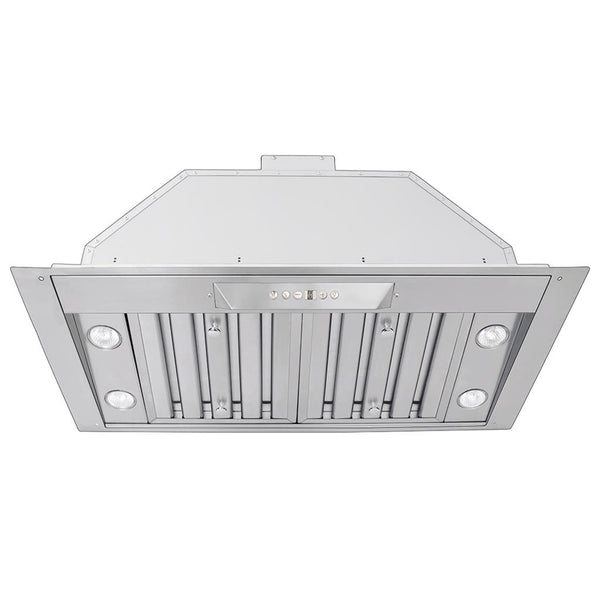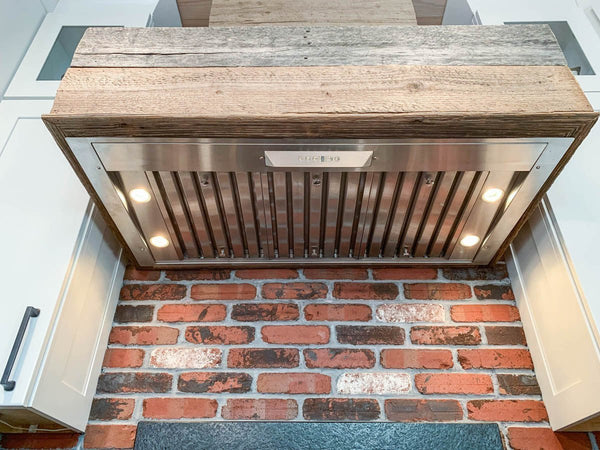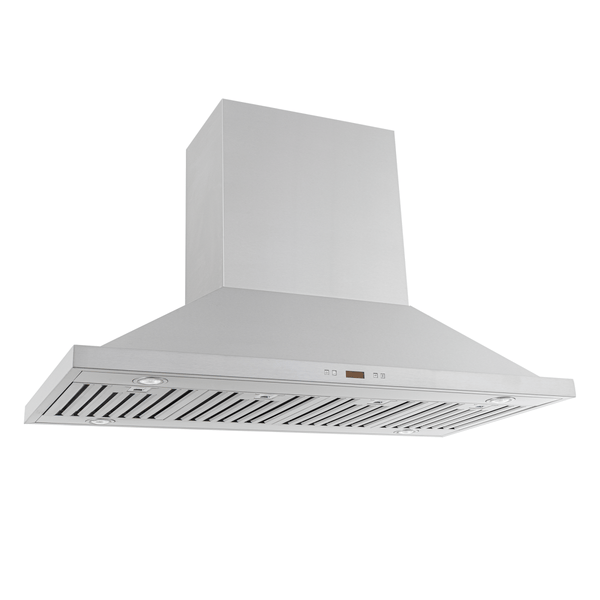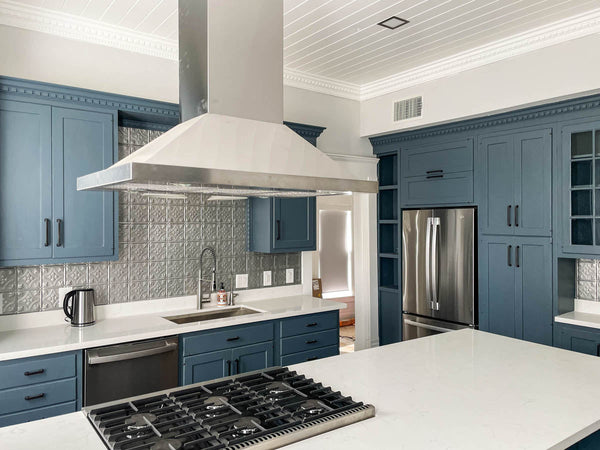You walk into your kitchen one day and notice cold air coming down the range hood vent and into your kitchen. What could be the cause?
Fortunately, this is an easy problem to solve.
4 Solutions to Stop Cold Air in Range Hood Vents
If you already have a backdraft damper, check if it is bent or damaged. Also, make sure that the damper is grease and grime-free. It should open and close smoothly.
Install a Backdraft Damper
There are two places you can install your backdraft damper. A damper a few feet away from your vent cap will keep debris and small animals out of the duct. If you are worried about backdrafting, install the damper a few feet away from the top of the hood where it connects to the duct.
Pro Tip: A spring-loaded damper is more reliable at keeping cold air out than a standard damper without a spring. Thanks to the spring mechanism, it can't be pushed open by harsh winds or small animals.
Check for Bent or Damaged Parts
Go outside or in your attic to inspect the damper. See if it is bent or damaged. Some wear and tear may be normal, but if your damper does not open and close properly, you may need a replacement.
Check the wall or roof cap too. Make sure that it is in good condition and secured to your duct. If you notice any cracks or worn threads, buy a replacement.
Clean the Damper Thoroughly
If you see any heavy grease buildup, grab a kitchen degreaser and a towel and clean your damper. Heavy grease may prevent the damper from opening and closing properly, allowing cold air to sneak in your duct.
Detach the damper from the duct to make cleaning easier. While you've got your degreaser handy, clean your range hood filters too.
Check Duct Screw Interference
Depending on your duct installation, you might have secured the duct with screws at different points. These can prevent the damper from opening, letting cold air in.
Tighten them so they are flush with your duct, or carefully adjust the damper away from the duct screws. If needed, remove and reinstall screws in a different location.
Important Notes:
Typically a range hood should have one backdraft damper. Some hoods have two dampers: one near where the duct connects to the hood, and one at the other end of the ductwork. But two dampers are not necessary in most cases. If in doubt, contact the manufacturer of your range hood to see which damper is best for you.
How to Insulate Hood Vents
Proper insulation can help prevent cold air infiltration and improve energy efficiency. This involves four main steps:
Insulation Steps:
- Seal any gaps in your duct with foil tape
- Use a duct sealant to seal any gaps in the elbows
- Cut and wrap insulation around your duct
- Secure the insulation in place with foil tape
For more detailed information, check out our article 'Should a vent hood duct be insulated?'
How to Permanently Close Off a Downdraft Vent
To permanently close a downdraft vent, buy a wall or roof cap and secure it to the vent outlet with caulking glue. You can also spray the inside of your duct with spray foam. But the foam doesn't always create an airtight seal, so you'll want to cap the duct anyway.
Note on Spray Foam:
Different brands of spray foam may work better than others, but capping the duct is still the most reliable method for a permanent seal.
Frequently Asked Questions
Yes, a range hood damper keeps cold air from entering your range hood vent. This saves you money on heating your home. It also prevents debris and small animals from entering the duct so you don't have to clean it out as often.
A backdraft damper prevents small debris or animals from entering your range hood duct. It also keeps cold outside air from coming through the duct into your kitchen, improving energy efficiency and comfort.
A range hood damper is inside the ductwork. It's often found near the exterior wall or roof where the duct terminates. Some dampers are installed near the top of the range hood where it connects to the ductwork.
When sealing a range hood vent, use aluminum tape rather than duct tape. Aluminum tape adheres much better to metal ductwork and provides a more durable, airtight seal over time.
Spring-loaded dampers are more reliable because the spring mechanism prevents them from being pushed open by harsh winds or small animals. Standard dampers without springs may not seal as effectively in challenging weather conditions.
Related Range Hood Articles
Comprehensive guide on when and why you need a backdraft damper for your range hood installation.
Learn about backdrafting issues and how they affect your range hood's performance and your home's air quality.
Expert guidance on choosing the right duct size for optimal range hood performance and efficiency.
Discover how range hood inserts can enhance both the functionality and aesthetics of your kitchen space.
Need Help with Range Hood Issues?
Our range hood experts are here to help you solve any ventilation problems and find the perfect solutions for your kitchen.
Call (877) 901-5530 Shop Range Hoods











